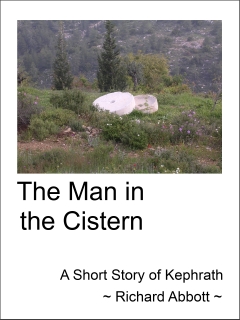One of the things I particularly wanted to do with In a Milk and Honeyed Land was to write about everyday life in a small town at the end of the Late Bronze age. There are plenty of novels written about Egyptian rulers like Ramesses, Akhenaten, or Nefertiti, and a fair number written with Moses as the main figure, or David a little later on. Some of them are well worth reading, and I dare say more will join their ranks in the future. But that is not what I wanted to do. I wanted to write about the kind of life led by more ordinary figures.
This then raises questions about how to do the background research. Most literature that we have from the ancient world concerns the interests and anxieties of a small elite minority, since only these few might be literate or at least could afford to engage the services of a scribe. Every so often we get glimpses of other layers of society, but even these are seen through elite eyes. Fortunately, we have other resources in the form of archaeological digs. These, interpreted every bit as cautiously as a piece of writing, can tell us all kinds of things about everyday life. So we can get a good idea about the houses people lived in, the cooking utensils they used, their basic diet, their tools and weapons, some of the objects that featured in their religious habits, and so on. It’s a difficult business, sometimes, to interpret the cultural significance of some items, when there is no written explanation to accompany them. For example, large numbers of small modelled female figures have been found all around the Levant. These have been interpreted in a great many ways, including a goddess figure as a focus for worship, a magical or good luck charm for promoting fertility or safety in childbirth, and a children’s toy!
Now, the advantage of dealing with a small town is that I can include a good range of people within the same few houses. So Damariel, although poor and a politically nobody compared to a Pharaoh, is nevertheless on the edges of the elite. He can read and write, is responsible for the spiritual and worldly life of his people, and is entitled to correspond with other similar leaders in times of crisis. And of course almost all of the towns and city states in the region were also small. Town leaders might well style themselves “king”, but in most cases they only held sway over a few square miles of territory and maybe a couple of thousand people. It had been said of a character called Phicol, who the Hebrew Bible describes three times as “commander of the king’s army” (in Genesis 21 and 26), that he most likely commanded fewer men than the typical Fire Brigade in a contemporary small town. Titles were often grander than reality, and numbers of people involved were usually much smaller than we might expect.
Finally… only a few days now to the book signing event for In a Milk and Honeyed Land – Saturday November 17th at Cornerstone Books, from 10:30 or so until 3:30 or so. Cornerstone’s contact details are: Cornerstone Books, 45-51 Woodhouse Road, London N12 9ET, 020 8446 3056, http://www.cornerstone.co.uk/pages/1648.htm. Hope to see you there!


